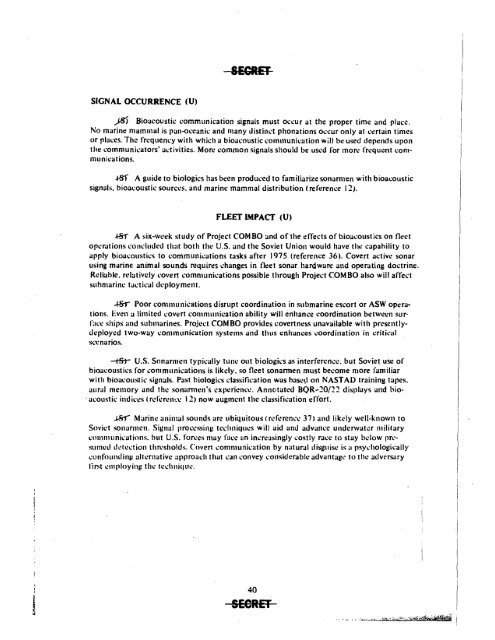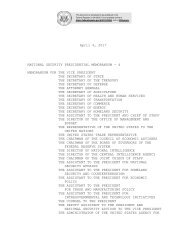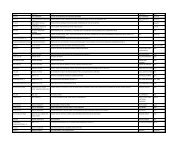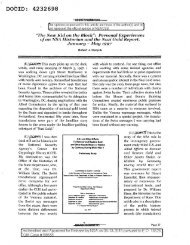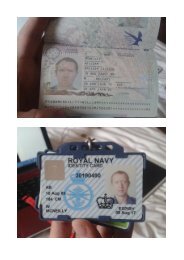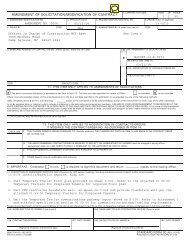NOSCrptProjCOMBO_1980
NOSCrptProjCOMBO_1980
NOSCrptProjCOMBO_1980
Create successful ePaper yourself
Turn your PDF publications into a flip-book with our unique Google optimized e-Paper software.
SECRET<br />
SIGNAL OCCURRENCE (U)<br />
)8'5 Bioacoustic communication signals must occur at the proper time and place.<br />
No marine mammal is pan-oceanic and many Jisrinct phonations occur only at certain times<br />
or places. The frequency with which a bioacoustic communication will be used depends upon<br />
the communicators' a1:tivitics. More common signals should be used for more frequent 1:ommunications<br />
.<br />
.4Bf A guide to biologics has been produced to familiarize sonam1en with bioacoustic<br />
signals. bioacoustic sources, and marine mammal distribution t reference 12>.<br />
FLEET IMPACT (U)<br />
.f.5'r A six-week study of Project COMBO and of the effects of bioacoustics on fleet<br />
oper.itions condudcd that both the U.S. and the Soviet Union would have the capahility to<br />
apply bioacoustics to communications rasks after 1975 (reference 36 ). Covert active sonar<br />
using marine animal sounds requires changes in fleet sonar hardware and operating doctrine.<br />
Reliable. relatively covert communications possible through Project COMBO also will affect<br />
submarine ta(.·tical deployment.<br />
~ Poor communications disrupt coordination in submarine escort or ASW opera·<br />
tions. Even a limited covert co111munication ability will enhance coordination between surface<br />
ships and submarines. Project COMBO provides covertness unavailable with prcscntlyd1:ployed<br />
two-way communication systems and thus enhances ~oordination in critical<br />
scenarios.<br />
-+st- LJ_S. Sonarmcn typically tune out biologics as interference. but Soviet use of<br />
bioaeoustics for communications is likely. so fleet sonannen must become more familiar<br />
with bioacoustic signals. Past biologics dassifkation wus base~ on NAST AD training tapes.<br />
aural memory and the som1m1e11's ex1,criencc. Annotated BQR-20/2'.! displays and hio-.<br />
·acoustic indices I rclcren·-·e 12) now augment the classification effort.<br />
~ Marine animal sounds arc ubiquitous I reference 37) and likely well-known to<br />
Soviet sonarmi;-11. Signal processing techniques will aid anu advance underwater military<br />
1:om111unit.:ations. hut U.S. for1:cs may face


